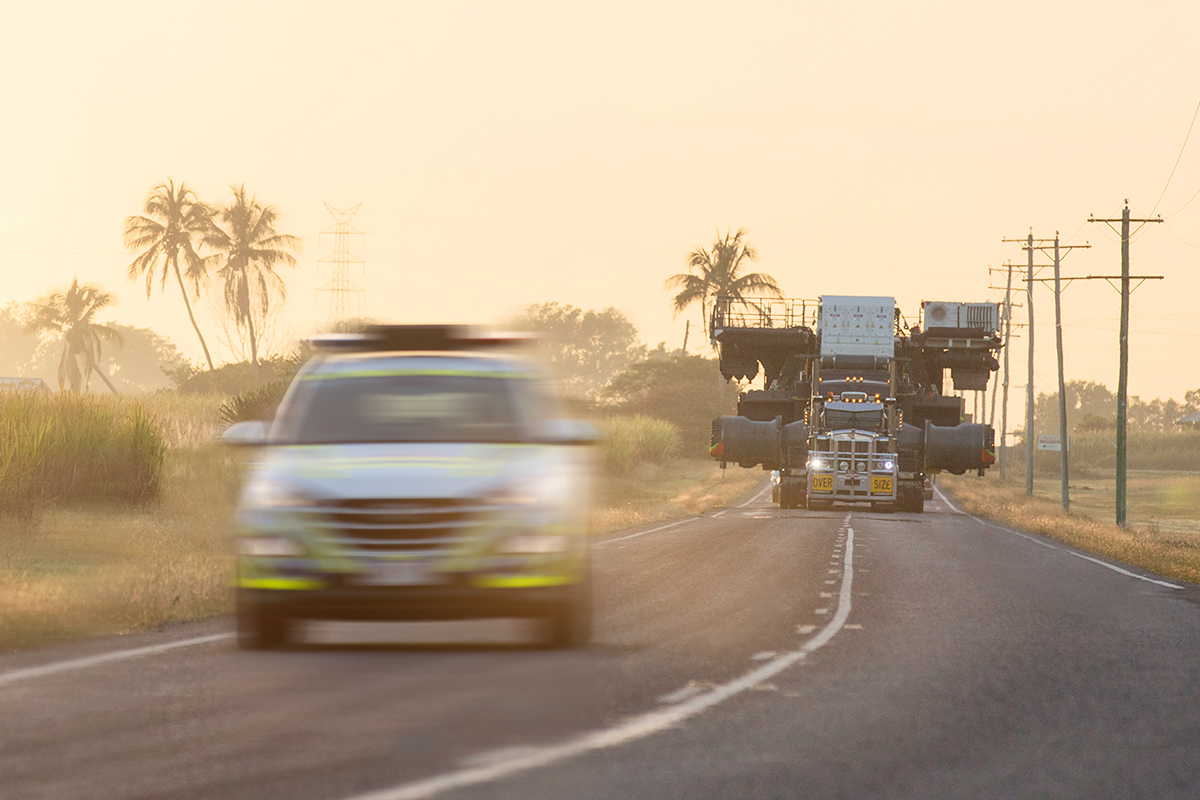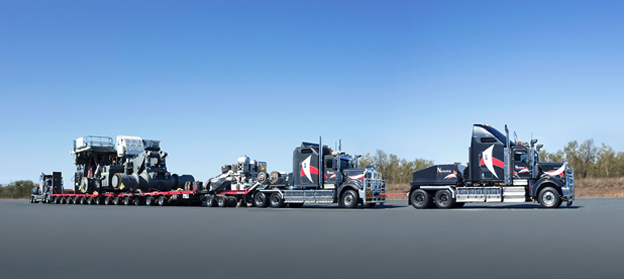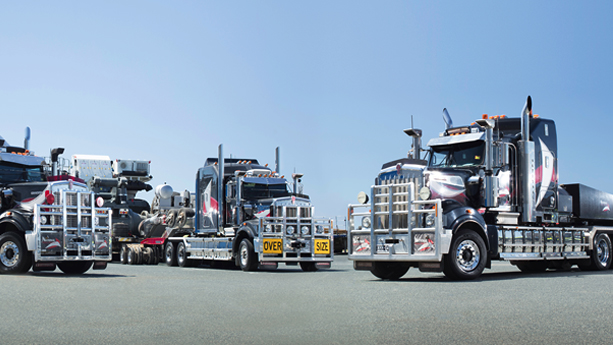National Group’s Port-to-Pit Approach
The National Group comprises of leading companies servicing the mining, resource, logistics and personnel supply industries. The National Group takes a port-to-pit approach to their operations, with national and international transport an integral part of their business.
“Our port-to-pit approach is pivotal to our success” suggests Mark Ackroyd, National Group Managing Director. “With mining often being undertaken in remote locations which are difficult to access, we regularly face the challenge of transporting from their source to their final destination, cost-effectively, timely and safely. The complexities of transport logistics are often miss-understood and cannot be underestimated.”
Taking this port-to-pit approach, the National Group regularly delivers equipment nationally and internationally through in-house subsidiaries such as National Heavy Haulage (NHH) and International Global Logistics (IGL).

National Heavy Haulage (NHH), part of the National Group transports large and heavy equipment of any size to the remotest locations throughout Australia. NHH regularly conducts route surveys in order to adequately assess the risk and identify the scope of the project.
Along with basic necessities such as measuring and securing loads with restraints, considerable planning and transport logistics goes into every haul. There is a standard restriction of 15 tonnes per axle with permit approvals often required from Government authorities such as Main Road Engineers, Inter-State Police and Rail.
“We regularly conduct route surveys to ensure the safe passage of large and heavy machines with unusual dimensions” explains Ian Scott, NHH General Manager. “Route planning can help identify and map out potential hazards such as low bridges, low hanging electrical wiring or river crossings that carry weight restrictions.”

For example, in late 2018 NHH delivered five Ultra-Class Liebherr T 282 C Dump Trucks to BHP’s Peak Downs mine site in Central Queensland. These ‘mammoth’ mining trucks required police escort and road closures to accommodate for the immense size of vehicle components, with hauls taking place over five separate trips throughout the months of September and October 2018.
Due to immense size and weight of these vehicles, additional prime movers were attached to ensure load safety, with two truck chassis pulling and one truck pushing the load up the Eton range, with road closures and QLD Police escorts leading the way.

“The trucks are some of the largest in the world and have an empty vehicle weight of more than 260 tonnes so when you put that into perspective, they each weigh more than 130 standard cars” added Mark Ackroyd. “This is not your every-day type of haul, so to manage and deliver a haul of this size is a testament to the professionalism of our team.”
NHH regularly liaises with third parties such as Ergon Energy in order to avoid high voltage, low hanging electricity wires during hauls. Due to the intense heat in the Australian summer, power lines can expand, sag and stretch, resulting in low hanging wires that pose a safety hazard. NHH therefore engages the use of a high wire escort that involves raising low hanging wires in order to ensure safe passage of the load.

“We are always on tight schedules, with delivery often required in order to meet its next port of call” notes Ian Scott. “We regularly liaise with our sister company International Global Logistics (IGL) as equipment is often en-route to and from international locations. If we experience any type of delays, this has a knock on effect that incurs significant additional costs. We have extensive experience in the heavy haulage of equipment of any size and due to the high stakes involved with heavy haulage, it’s in everyone’s best interest to leave it to the professionals.”

International Global Logistics (IGL) is part of the National Group and provides worldwide transportation service for heavy equipment and larger cargo.
“IGL is a key link in the transport and logistics chain, we rely heavily on our suppliers and in turn, they rely heavily on us” suggests Dean Sterling, IGL General Manager. “There is a chain of responsibility and any weak link could sabotage the whole operation, pose a significant safety risk or cause expensive and timely delays. Therefore measures must be put into place to manage this inherent risk.”

Along with adhering to International Shipping laws, IGL also follows general standard safety procedures that are ‘controllable’, with shipment specific strategic planning also undertaken. IGL also has to take into account natural forces that are ‘uncontrollable’ such as rising and falling tides, large and dangerous swells and extreme weather conditions such as cyclones.
“When loading large, heavy and expensive equipment onto a vessel, having a strong relationship with cargo owners, vessel captains and vessel planners is important” notes Dean Sterling.
For example, during the recent vessel loading operations of six Komatsu 830E Dump Trucks, IGL had to work with vessel owners and planners in order to lift large heavy equipment in a safe and efficient manner. Exhaustive risk management plans were set in place that involved tandem crane lifts for trucks weighing as much as 140 tonnes, with two cranes required to lift trucks in up to 90km/hour gusting winds.

Precision is key and timing is critical in the field of international logistics, with fines for vessel detention upwards of USD $20,000 per day when vessel delays occur.
During the development of a vessel charter plan, stages are developed in order to plan for load weights along with lifting diagrams to plan load distribution throughout the vessel. Ballast water is pumped into certain areas of the vessel. This water within the vessels water tanks is used to improve the stability and balancing of the vessel during loading and unloading operations. Uneven weight distribution could cause a vessel to list and sink, which would be catastrophic. This could have a dramatic impact on the wider community or cause disruptions to eco-systems and marine life in extreme cases such as hazardous chemical or oil spills.
“Having the timing and planning right from the get go for our port-to-pit approach is essential and this is what we strive to exceed. We make every effort to ensure things run as precise and as smooth as possible, however there are always contingency plans in place to manage and adequately respond to forces that occur beyond our control. Operations are carried out in a proactive and not a reactive manner, with a safety first and a zero harm approach paramount” concludes Dean Sterling.
Click here or on the video below to view the haul from port-to-pit.





